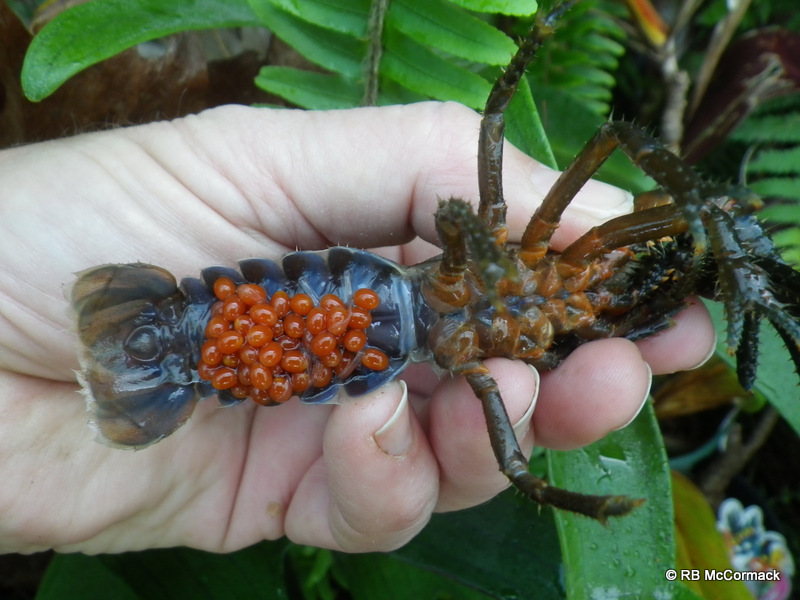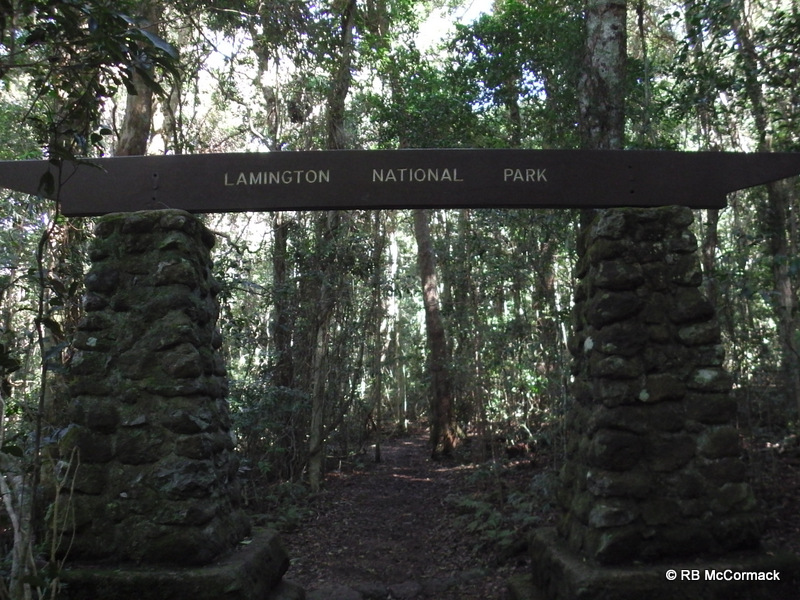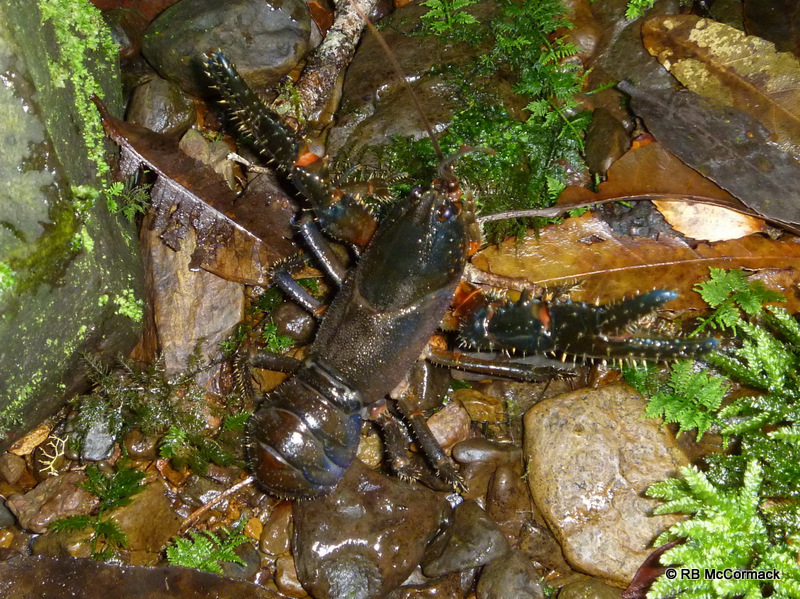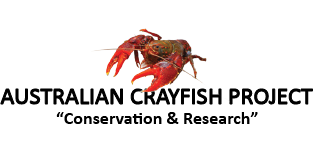SPECIES REVIEW 7
Embezee’s crayfish Euastacus binzayedi is a small dwarf group freshwater crayfish recently described from only one location in the upper reaches of Canungra Creek, Albert River drainage, Queensland, Australia.

History: Euastacus binzayedi was described by Jason Coughran and James Furse in 2013 from just five specimens collected in 2006 and 2010. The species was only known from the type locality, a small, well-shaded ephemeral gully with a dense subtropical rainforest canopy, at relatively high altitude ~900 m a.s.l.

Recent biological surveys by volunteers as part of the broader Australian Crayfish Project (ACP) and with the support of Queensland Parks and Wildlife Service have gathered new information on the species ecology, distribution and conservation status. Our surveys have greatly increased the known distribution to over 50 sites in 10 creek systems in the Albert, Coomera, Nerang and Logan river drainages.

Size: Euastacus binzayedi is a freshwater crayfish with a maximum-recorded occipital carapace length (OCL) of (Spec 5458), 32.28 grams, 38.98 mm OCL, from Lamington National Park. This size substantially exceeds the maximum originally documented for the species 31.82 mm OCL (Coughran et al 2013).

Breeding: Coughran et al., 2013 predicted female maturity to start at around 30 mm OCL. Our research documents reproductively females needing to be much larger with the smallest at 33.47mm OCL mm OCL and some specimens at 37.42 mm OCL still being immature. Freshly moulted mature females and females bearing eggs were observed in mid July indicating the commencement of the breeding season. The developing eggs were burnt orange in colour (Fig 3) and numbered approximately 50 per clutch. Our surveys suggests a small female breeding pool, low fecundity and large egg size (3.7 mm diameter), similar to that noted for other dwarf spiny crayfish species of Euastacus such as E. urospinosus (McCormack and Van der Werf 2013).

Distribution: Euastacus binzayedi is a highland species requiring cool conditions, distributed from 549 m to 1125 m a.s.l. in the upper catchment of Nerang, Coomera, Albert and Logan river drainages. All within Lamington National Park region. NOTE: Research continues on this species so distribution may change with genetic results from the different creek populations.

Conservation status: No IUCN listing is available for this species as yet. However, the species has been Nominated as a Critically Endangered species under the Queensland Nature Conservation Act 1992.

Euastacus binzayedi shares its habitat area with a giant group crayfish Euastacus sulcatus. This one above was scavenging around the rainforest floor, well away from the stream. It had found itself a piece of intestines and was reluctant to release its bounty.
Final Note: Embezee’s Crayfish Euastacus binzayedi has been the subject of an ACP strategic research project. We are currently preparing a manuascript for publication in “Freshwater Crayfish Journal” with 6 other dwarf group species from the SE Qld – NE NSW region.
The taxonomy, distribution, ecology and conservation status of Embezee’s Crayfish Euastacus binzayedi Coughran et al., 2013 (Crustacea: Decapoda: Parastacidae), a dwarf freshwater crayfish from the Gondwana Rainforests, south-eastern Queensland, Australia.
Robert B. McCormack1,2, James W. Fetzner JR. 3, Paul Van der Werf4 and Craig N Burnes5
